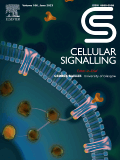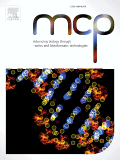
“CB1 cannabinoid receptors (CB1R) are one of the most abundantly expressed G protein coupled receptors (GPCR) in the CNS and regulate diverse neuronal functions.
The identification of GPCR interacting proteins has provided additional insight into the fine-tuning and regulation of numerous GPCRs.
The cannabinoid receptor interacting protein 1a (CRIP1a) binds to the distal carboxy terminus of CB1R, and has been shown to alter CB1R-mediated neuronal function.
The mechanisms by which CRIP1a regulates CB1R activity have not yet been identified; therefore the focus of this investigation is to examine the cellular effects of CRIP1a on CB1R signaling using neuronal N18TG2 cells stably transfected with CRIP1a over-expressing and CRIP1a knockdown constructs.
These studies suggest a mechanism by which endogenous levels of CRIP1a modulate CB1R-mediated signal transduction by facilitating a Gi/o protein subtype preference for Gi1 and Gi2, accompanied by an overall suppression of G-protein-mediated signaling in neuronal cells.”







